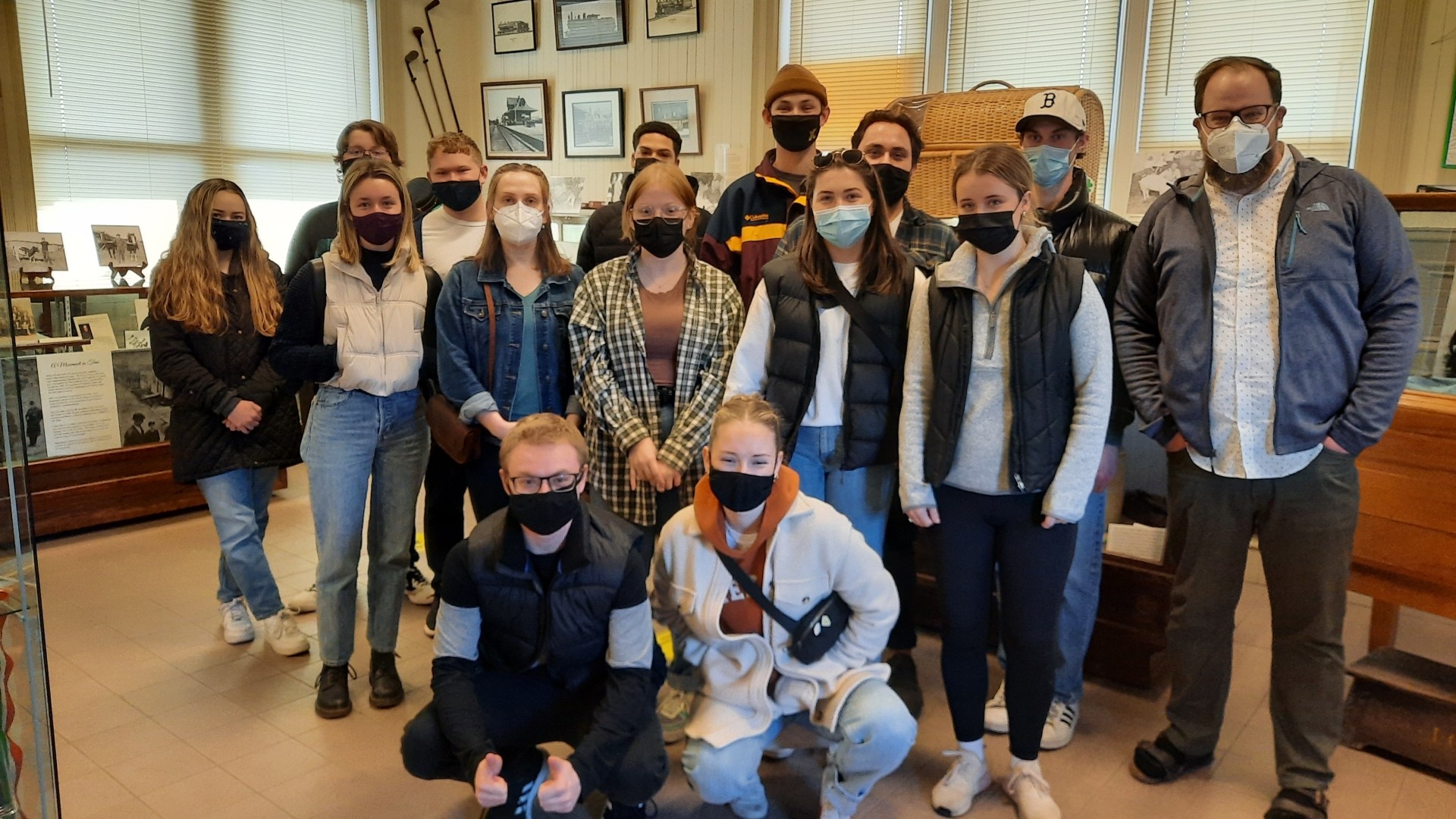
If you’ve ever walked down Main Street in Antigonish and failed to notice a pioneer cemetery moldering away behind the Irving gas station, no one would blame you. The burying ground, first opened in the 1820s, has been closed to burials since the 1870s and was neglected for much of the 20th century, says StFX history professor Dr. Barry MacKenzie.
But now students in Dr. MacKenzie’s Introduction to Public History class at StFX are bringing some of those early pioneers back to life, so to speak.
Partnering with a local cemetery restoration committee, and as part of their course, the students made an important contribution to an ongoing public history project in their community this term by researching records to learn what they could about those buried in the cemetery, which at one time was part of a complex of buildings and property owned by the Diocese of Antigonish that included the present-day section of downtown now occupied by buildings between the John Paul Centre and Town Hall.
Dr. MacKenzie says long before these buildings were erected, this corner was occupied by the original St. Ninian’s Church and priest’s residence, and the original StFX College building. The cemetery, in the western half of this diocesan complex, was laid out with 185 plots, each of which could accommodate up to six burials.
Before many plots could be filled, St. Ninian’s Cathedral was constructed and a new cemetery was erected to the south of town, to accommodate the growing Catholic community. The old St Ninian’s church became the Main Street School, and the cemetery was soon closed. Over time, the site was built up, the Diocese of Antigonish eventually sold some property to the Dominion government to make way for a new post office (now Antigonish Town Hall), and other new buildings and a parking lot were erected on cemetery property.
By 1981, all that remained of this pioneer cemetery were between 40 and 50 stones, laid out flat on the ground in a semi-circle as part of an effort to beautify what was left of the site. Over the next 40 years, the surviving stones continued to deteriorate, a process accelerated by their new positioning. Two years ago, a committee set out to rescue the site. The stones were removed to safe storage, and a campaign is underway to raise funds to enhance the grounds, stabilize and re-install the stones, and highlight the history of this important site.
When a member of the restoration committee approached Dr. MacKenzie to see if there might be some way to involve StFX students in the project, Dr. MacKenzie responded with enthusiasm. “I had been tinkering with the idea of offering a course on public history this year,” he said, “so the timing was perfect.”
Little is known about many of the people who were buried in the cemetery, and the committee wanted some way to tell their stories.
“That’s where my students came in,” Dr. MacKenzie said. “Each of them selected two individuals from the list of known burials based on the surviving stones. They were tasked with scouring local records to find out everything they could about these pioneers. For many, the process was a bit laborious.”
Third year student Kegan Palmer said, “I soon came to realize my search was like finding a needle in a haystack. My experience uncovering the history of these two individuals was very interesting, and while at times arduous, I learned a lot about the process by which historians undertake these efforts.”
The students each spent several hours doing primary research at the Antigonish Heritage Museum, poring over census, church, genealogical, local history, newspaper, and legal sources to help recreate the lives of their chosen figures. Sometimes those searches resulted in long, detailed biographies; at other times, students struggled to find even the names of parents or an occupation.
“That’s the nature of historical research,” Dr. MacKenzie notes. “Not every search is going to yield what we want it to, but the students learn so much just from the process of completing it.”
The results of the students’ research will form the basis of an online exhibit which will share the story of the pioneer cemetery and the people who lie buried in it with the wider world.
“Doing history – in collaboration with community groups and with a very broad audience in mind – that’s what public history is all about,” Dr. MacKenzie said.
Jocelyn Gillis, recently retired curator of the Antigonish Heritage Museum and a member of the restoration committee, said “We were delighted with the enthusiasm of the students and recognized that ‘many hands make light work’ in a project of this kind. Each puzzle piece the students uncovered, gave us a clearer picture of the individuals and families buried in the cemetery. Those interred are among our community’s earliest settlers, builders, and family members.
“In time the cemetery will be more visible to the passerby and maintained as a contemplative, respectful place to visit. Researchers and genealogists in the future will be able to capitalize on the work completed by the students of Dr. MacKenzie’s public history class.”
Reflecting on the experience, Mr. Palmer said: “As StFX students, we live in Antigonish for four years, not often knowing anything about the town we live in, who came before us, and who cultivated the area that we call home. I am happy to have learned some of this information, contributing to a piece of public history while doing so.”
For more information on the restoration project, visit https://www.stniniansparishcemetery.ca/st-ninians-pioneer-cemetery/

